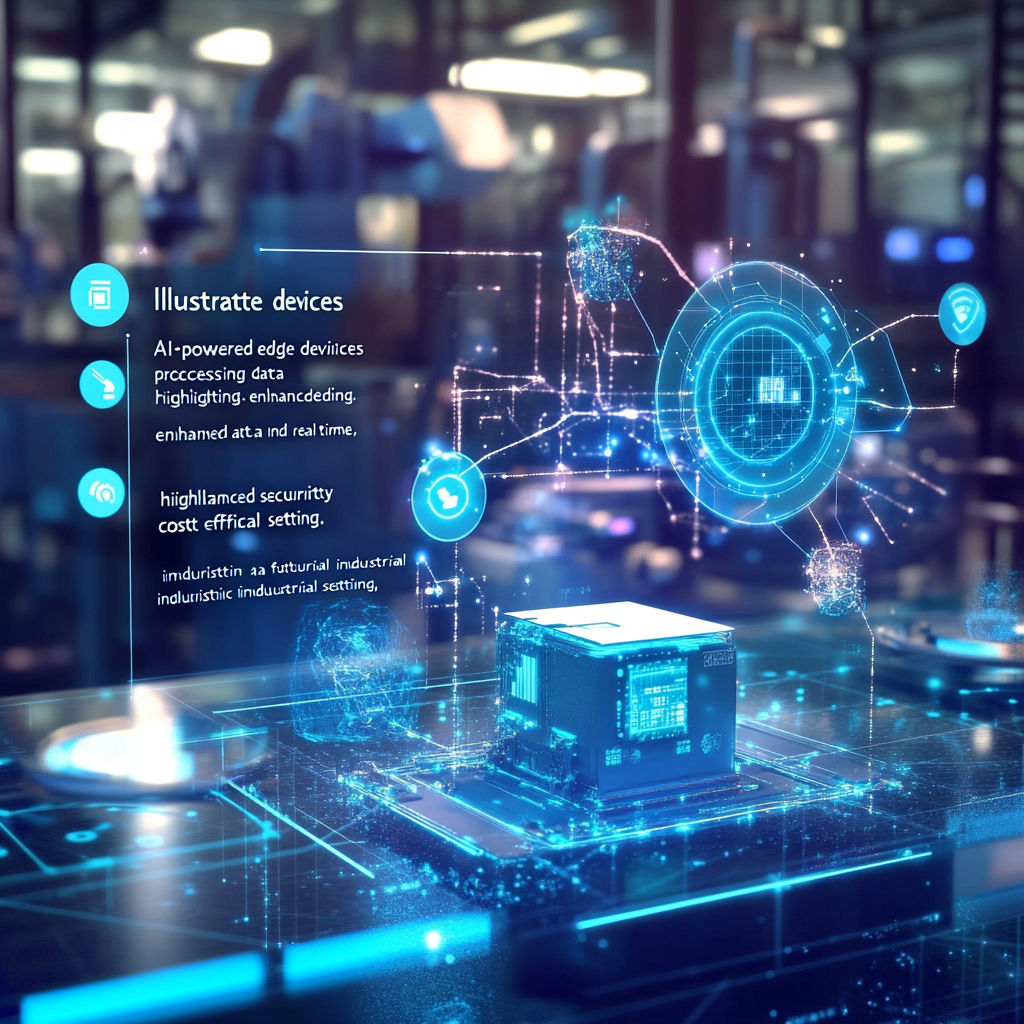
Silicon Brains Power AI’s Grounded Evolution
In the whirlwind world of technology, change is the only constant. And right now, the spotlight beams brightly on a fresh trend that’s rapidly morphing the AI landscape—it's all about packing up the cloud and moving to the edge. Imagine a time when your face-recognition software doesn't just sit in a remote data center, but is actually embedded in your smartphone or even the camera on a streetlamp. Welcome to the new frontier, folks. Yes, edge computing and AI are getting hitched, and it's a match made in tech heaven!
But what’s the deal with this switch from the cloud to the edge? Distant data servers sound like a reliable partner, but they pack their bags when it comes to latency, security, and costs. The edge brings local processing into play, and boy, does it make a difference. If you think about how many bits of information are floating around in the ether daily, with every smartphone ping and IoT sensor sending signals, then you know that real-time, low-latency responses are the lifeline many industries desperately need. Autonomous vehicles hurtling down highways, remote health monitors keeping watch on patients, and industrial machines making swift decisions—all need that immediacy that edge computing can deliver.
But let’s get this straight: while edge computing offers a glorious buffet of benefits, it isn’t merely the latest tech fad; it’s also a response to the growing need for data privacy and security. Think about healthcare, where every heartbeat and medical history byte is akin to gold dust. Processing data locally means that sensitive information stays close to home, so to speak, minimizing risks of leaks or cyber mishaps that make headlines. Forget about the couriers shuttling your data off to a far-off cloud server, where the data might be vulnerable. Edge computing plants those couriers right where they ought to be—next to the data they’re entrusted with.
And let’s not gloss over the financial aspect. Edge computing trims the fat from those hefty cloud bills. By minimizing the data sent back and forth, companies can save on bandwidth costs—an appealing proposition in a world where every penny counts. For businesses operating in remote locations with expensive connectivity, this translates into reduced operational hurdles and a bigger bang for their buck.
Now, let’s not kid ourselves. The revolution of edge computing is not sprouting up in a vacuum; it’s a symbiotic relationship forged alongside major players hopping on the bandwagon. Intel, AWS, Nokia, and Ericsson—these titans are joining forces to roll out edge AI solutions across a spectrum of industries. Imagine a manufacturing plant in Detroit or a bustling transportation hub where smart technology courses through every inch of operation. That's the essence of their collaboration. Even historical treasures like Chichen Itza are benefiting from these tech advancements—talk about taking innovation to new heights!
Take Lenovo, for example. They’re stepping into the automotive realm, aiming to replace a staggering 250,000 embedded PCs with around 25,000 edge servers. That’s no small fry; it showcases the robust demand for edge computing solutions in sectors where safety and real-time functionality are non-negotiable.
If we turn our gaze toward the relationship between AI and edge computing, it's like a dynamic duo striding hand in hand into the sunset. They amplify each other's strengths: edge devices tackle the urgent, lightning-quick tasks that demand immediate attention while the cloud handles the heavy lifting for complex operations best suited for its resources. Imagine a trusty old pick-up that can haul big trailers contrasted with an agile race car built for speed; both vehicles have their roles but shine in different lanes.
Hang on a sec; let's talk intelligent data management. What edge devices can do is pretty nifty—they preprocess and filter out the noise, only sending the most pertinent information skyward to the cloud. What this means is slashed bandwidth costs and smarter, more efficient storage solutions while still keeping the door wide open to ample data analysis.
This synergy doesn’t just stop at processing. Edge devices perpetually learn and adapt, feeding data back to the cloud where AI models are meticulously fine-tuned over time. When those models evolve, they’re sent back out to the edge, ensuring continuous progress. This cycle is reminiscent of Mother Nature’s own concept of evolution—all about adapting to thrive.
Now, if you thought edge computing was merely a blip on the radar, think again. Current estimates place the global edge computing market value at over $200 billion. And as AI and IoT technologies continue to push their boundaries, the demand for edge computing isn't just set to grow; it's ready to explode. By 2025, we can expect edge computing to be as commonplace as your morning espresso, as businesses scramble to embrace real-time processing while avoiding those pesky cloud fees.
So what’s in store for us mere mortals in everyday situations? The applications seem endless and extremely promising. Consider the Dairyland Power Cooperative over in Wisconsin—this electricity supplier is greasing the wheels of its infrastructure with general AI. That’s efficiency at its finest!
And here comes my favorite nugget: smart cities. Edge AI is the ally we didn’t know we needed in our quest for smarter urban living. Think about computer vision algorithms taking charge when it comes to fire detection or lending a helping hand to tourists and locals alike trying to navigate their surroundings. For the visually impaired, it’s a game-changer, and for the cities that deploy these technologies, it’s a step toward a brighter, more connected future.
The voice of wisdom echoes here, as Kirk Skaugen from Lenovo sums it up perfectly: “Move AI to where the data is.” The merging of AI and edge computing isn't just some techie's daydream; it’s the pulse of progress manifesting right before our eyes. With the colossal potential lurking at the edge, every business, every industry, must recognize this shift or risk being left in the digital dust.
In closing, let me just drop this bomb: the union of AI and edge computing is not only natural—it's inevitable. It's a dance of devices and data, each relying on the other to fully unlock their potential. So as we stand on the brink of this thrilling new frontier, the question is—are you ready to step into the future?
Want to stay up to date with the latest news on neural networks and automation? Subscribe to our Telegram channel: @channel_neirotoken. Embrace the edge! The future of AI beckons, and it’s a wild ride that you won’t want to miss.

